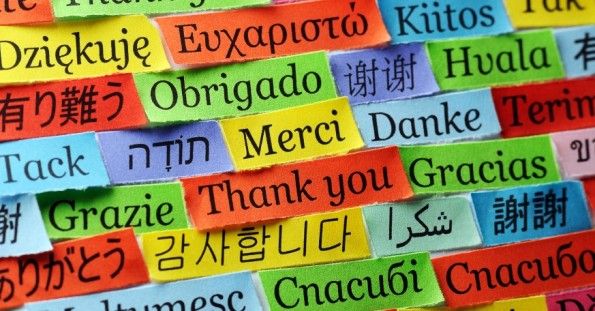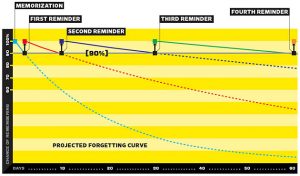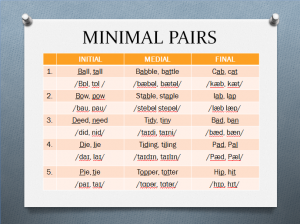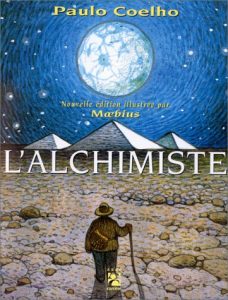How Busy People Learn Languages

The two biggest myths of language learning are that it takes years to learn a language and that you need a lot of time to do it. In fact, many languages can be learned in a year or less with a time investment of no more than an hour a day, but this doesn’t happen learning languages the way most of us have been taught.
As an aspiring polyglot, I’ve tried learning languages in just about every imaginable way: I took Latin classes in grade school, I tried night school Japanese at a local university, I’ve had private Chinese tutors, I completed the Duolingo tracks for both Spanish and French, and I even spent an entire summer at a Chinese immersion program run by the famed Middlebury College. Some of these things worked better than others, but most have either felt inefficient or unsustainable; classroom and self-taught curriculums often require large time investments and don’t emphasize real-life conversational fluency, and immersion, while great, doesn’t teach strategies to retain hard-earned progress long-term.
If, like me, you’re a busy person without all that time and energy to spare, you can’t afford huge time investments with low long-term returns. Fortunately, there are strategies and techniques used by successful polyglots that can take you to fluency quickly and maintain that fluency with minimal effort. I’ve personally been able to use many of them to get myself from beginner to intermediate/upper-intermediate in French in under a year.
Disclaimer: as a fledgling writer and aspiring digital nomad, I do sometimes receive compensation for sale or use of products and services mentioned on my blog. I do, however, only mention products and services I have used personally and strive to always provide my honest opinion positive or negative. I will never compromise the integrity of the content on this blog for financial gain.
The Shortest Path to Conversational Fluency

Trying to speak a new language can be embarrassing! (Image Source)
When it comes to conversational fluency, the real problem with most approaches is that they don’t force you to confront what’s really holding most people back in foreign language conversations: fear of rejection and sounding stupid. Instead of challenging themselves in a difficult and potentially embarrassing situation, most people retreat into book studies, telling themselves that if they just memorize a little more vocabulary or if they just keep studying those conjugation tables, they’ll be ready soon. Except that soon almost always turns into never, and even when it doesn’t no amount of book studying can save you when you panic and your mind goes blank. (If you read last week’s post, you may recognize this as a form of emotional inertia: talking to people in a new language and risking sounding like a lobotomized second grader is terrifying, especially for recovering perfectionists like myself, so it’s easier to just avoid that situation altogether.)
When you force yourself into real conversations with native speakers, you start to overcome the anxieties that make these situations scary. As a result, you begin to open yourself up to more opportunities to learn by speaking to people in new and different contexts. Furthermore, the quickest way to learn the vocabulary and phrases you actually need to carry on conversations is, well, trying to have conversations. (Captain obvious saves the day!) Each time you have a new conversation, it highlights new areas for directed growth toward your weak areas. (Contrast this with the sort of shotgun approach taken by most structured curriculums.) Didn’t know how to say “hello,” “thank you,” or “how are you”? Go memorize them. Couldn’t figure out how to express a thought or opinion? Figure out how to say “I think that…”. Struggled to answer a certain question about your life? Prepare an answer offline that you can practice and deliver the next time someone asks. Your conversations may last as little as 10 seconds before switching to English, but over time you should be able to push this further and further until you’re having full and rich conversations in your target language.
Learning Mindset

It’s all about the mindset. (Image Source)
With the right mindset it’s almost never too soon to start talking to people in your new language. In fact, Benny Lewis, an accomplished polyglot and author of Fluent in 3 Months, encourages people to start having foreign language conversations in their first week of learning. The trick is to remember that the goal is to understand and be understood without reverting to English for as long as possible, and that failing and making mistakes is totally OK. In the beginning, everything is fair game–pointing to objects, bizarre and convoluted hand gestures describing abstract concepts, or interpretive dances–just try not to revert back to English in fear or frustration. Don’t let yourself get caught up on the mistakes you’re making–the words you mispronounced, the grammar you botched, or the vocabulary that left you when you metaphorically shit yourself–instead remind yourself that perfection takes time and practice, and that even native speakers make mistakes sometimes. Your speech may be broken, and you may sound like you were repeatedly dropped on your head as a child, but so long as the gist of your meaning is somehow getting across, you’re doing great. You don’t need years of classroom instruction, you just need, as with most goals, a few ounces of courage to get started, a dash of discipline to consistently keep at it, and a pinch of perseverance to help you through the most embarrassing moments.
Immersion programs work so well because they give you no choice but to fall into this mindset, and then force you into uncomfortable situations where you don’t know what to say or how to say it. Conversely, some of the more popular language learning tools like Duolingo aren’t as helpful because they give you the illusion of progress without actually dragging you into real conversations. This isn’t to say that things like Duolingo don’t work–if you spend enough time with a tool or set of tools, you’ll eventually reach a certain level of fluency, but then, if you spend enough time trying to crack a coconut open with toothpicks, you’ll eventually succeed. (Don’t quote me on that–I’ve, uh, probably, never actually tried this.) Don’t get me wrong, I love Duolingo–I think what they’re doing is great, their product is moving in the right directions (chatbots are beginning to help close the conversational fluency gap), and I love their mission of providing free language education for all, but having graduated from two of their language tracks, I can attest that it never took me to a sense of real fluency in either language. Tools like these are great supplemental resources, but they’re not going to get you where you want to go on their own.
Language Exchanges
If we’re on the same page at this point, you’re probably thinking, “Great, thanks Daniel, I get that having real conversations is important, but I don’t know anybody who speaks Klingon, so what gives?” Fortunately, it’s a wonderful time to be alive and we have this amazing thing called the Internet (maybe you’ve heard of it?). The primary mechanism I use for having conversations with native speakers is called a language exchange, wherein I connect with someone on the other side of the planet who speaks the language I’m trying to learn and is trying to learn English, so we’re able to trade competencies. There are a lot of websites out there to help facilitate language exchanges, but the one I currently use is called italki. (Disclaimer: this is a referral link, so I do have a small incentive to advertise here. You and I would both receive $10 in italki credits if you take a lesson with one of italki’s very affordable–sometimes as cheap as $10/hr–community tutors. That said, I primarily use italki for the community, not for the tutoring, though both are great.) Through italki, I’ve connected with native French speakers in Europe and Africa. It honestly still freaks me out every time, but doing more of these was one of the improvement areas I identified for my French-learning goals during this year’s mid year review. Aside from italki, I’ve also found that there is a wealth of language-related meetups, so it’s usually not hard to find other language learners to practice with. If you’re feeling really brave (or really desperate?), it can be surprisingly easy to find people to practice with spontaneously in the real world as evidenced by this video of a couple polyglots speaking 12 different languages with random strangers in Ohio of all places.
Efficiently Learning Everything Else
If having real conversations is the strategy for getting us past our anxieties and identifying our areas for improvement, the next natural question is: what’s the best way to improve once we know what we need to improve? And how can we maintain our language gains with minimal effort?
Spaced Repetition

Spaced repetition allows you to review information efficiently. (Image Source)
The answer to both questions is a memory technique called spaced repetition, which is actually already in use behind the scenes in some popular language tools like Duolingo and Memrise. Spaced repetition involves reminding yourself of a piece of information at an interval that optimizes your likelihood of remembering it without overexposing yourself to it, theoretically resulting in better long-term retention of the data each time you review it, while minimizing the number of reviews.
In practice, if you’re using spaced repetition with a deck of flashcards, rather than review those cards every day, the first day you would review all of your cards. Then tomorrow, you would go back and review your cards again, and you’ll save the cards you remembered correctly to review again in two days. The cards you didn’t remember correctly, you’ll review again the next day. Each time you successfully remember a card, its review interval increases exponentially (so if it had been two days since you saw this card, now you’ll snooze it for four days), and each time you fail to remember a card, it starts over in the process. Eventually, you won’t need to review some of these cards for months or even years. In order to avoid having to study hundreds of cards at a time, you can also break the deck up and just learn a few cards every day to keep things manageable.
There are a few software tools out there for automating the spaced repetition process, but the main two I’ve come across are Memrise and Anki. I personally prefer Anki because it’s more flexible and customizable and virtually every polyglot I’ve ever talked to uses it. It’s also free so long as you can get away without it on your mobile devices. It is however, a lot less sexy and modern-looking than Memrise. Of note, Gabriel Wyner also has a Kickstarter out for a new language learning app, which promises to be a solid competitor to these existing options. (In fact, many of the tips in this section originate from Gabriel’s book Fluent Forever, which likely does them better justice than I can.)
So what is it we’re actually using spaced repetition to memorize? Well, truthfully, you can use this to memorize anything (I’m looking at you, future doctors and lawyers), so long as it comes in small, quizzable chunks. That said, for learning a language, the main things you’ll want to memorize are vocabulary and grammar, and primarily you’d be doing that through flashcards.
Memory Hacks for Flashcards
To get the most out of each flashcard, you’ll want to abuse a few memory tricks. First, every flashcard should have an image. We have visual memories, so associating a foreign language word with an image is much better for you than associating a foreign language word with an English one (which would more-or-less sets you up for translating word-by-word in your head later on). It can be fun to Google image search foreign words because sometimes the subtle differences in the connotation of the word as it’s natively used and its English translation become apparent. (Gabriel Wyner calls this “spot the differences” in Fluent Forever.)
Second, choose an image that is really provocative. Our minds tend to remember things that are really out there: really strange, really funny, really sexy, or really violent. (No joke, I have some pretty racey flashcards–it doesn’t help that a non-trivial number of French words turn up unexpectedly sexual image search results.)
Last, if you can, write a word or short phrase that reminds you of a memory you have that is somehow associated with the vocabulary in question. When this card comes up, try to remember what this phrase was as well. Since our memories operate as sort of associated networks of information, the more connections you’re able to make between a new word and other new or existing memories in your mind, the easier it will be to remember.
Learning Vocabulary
When it comes to learning vocabulary, you need to get yourself to the point where you’re picking up new vocabulary words in the wild–as opposed to from a list–as quickly as possible. This ideally means finding new words and sentences to learn from in their natural contexts–from easy reading, from watching YouTube videos in the target language, or from playing video games in the target language, for example. Unfortunately, the shortest path to getting to this point does involve memorizing vocabulary from lists, but not the lists you’re used to finding in your textbooks. Instead, you’ll want to grab a list of the most frequently used words in your new language. This works because the most frequently used words in a language appear disproportionately often in context so, for example, by learning the 600 most frequent words in a language you can actually learn most of the words you’ll expect to see in the wild, which will typically leave you able to guess at the meaning of most simple sentences, even if you don’t recognize all of the words.
It’s typically not terribly hard to find a list for your language free and available on the Internet, but I personally bought a frequency dictionary for French and don’t regret the investment. I’m also a big fan of Gabriel Wyner’s frequency lists, as they offer a more visual and thematic experience.
When it comes to vocabulary, one of the really important points is that you make your own flashcards. There’s an abundance of existing flashcard stacks on the Internet for any language you could want to learn, but the experience of creating the flashcards in the first place, if done right, is a valuable first step in establishing a concept in your memory. For each word, you’ll want to create at least a couple of flash cards using as little English as possible: 1) picture of something on one side, word itself and other info (like gender, pronunciation, similar words, or relevant memories) on the other side; 2) word on one side, picture and other info on the other side.
If you use Anki, check out Gabriel Wyner’s Anki card templates and use Forvo to grab native speaker pronunciations for words and sentences you make flashcards for.
As a bonus tip here, for languages with those pesky gendered nouns, you can actually shove this information into your visualization centers by associating a descriptive verb with each gender. For example, I like to use “freezing” for feminine words and “burning” for masculine words, so if the word is “farm” and it’s feminine, I’ll picture the image of the farm that I have on the card, but with everything frozen over. Anything that creates a provocative image when combined with the images on your cards will do–melting, shredding, eviscerating (disemboweling? ._.)–let your imagination run wild :).
Learning Grammar
The mechanisms behind learning grammar are similar to that of learning vocabulary. Use all the same memory hacks, but generally use sentences rather than words now. For grammar, it’s easiest to use a sentence you’ve either written yourself or found somewhere and create a blank in the sentence that you have to fill. For example, if I’m trying to learn a verb conjugation, rather than make myself a flashcard for the second person singular of that verb, I’ll just create a sentence flashcard that implies second person singular and leaves a blank for the verb form. I’ll usually give myself the verb infinitive, since the goal here isn’t to test if I know the word, but rather the form of the word that fits here. You can also do the same thing for other grammatical constructs like learning which preposition to use. Eventually, you can also use fill in the blank sentences to learn vocabulary words.
Again, I would check out Gabriel Wyner’s Anki card templates for this if you use Anki.
Learning Pronunciation

Some example minimal pairs difficult for English learners. (Image Source)
Some languages have pronunciation systems or just consonants and vowels that are really different from English. For example, Mandarin Chinese has a tonality system that English speakers find excruciatingly confusing, and French has some very, very subtle pronunciations that sound similar. Sometimes you’ll find yourself staring dumbly at a native speaker who insists that two things that sound exactly the same are actually completely different words or phrases. (Fun fact: these words/phrases are actually called minimal pairs.)
Don’t worry, you’re not dumb. You really can’t hear it. When we’re young, our brains automatically learn to cluster the sounds of our native language into vowels and consonants we recognize. Some languages have slightly different sound clusterings that other languages get easily confused because they get lumped into a sound clustering that we do recognize. But don’t lose heart, it is possible to train one’s ear and one’s tongue to hear and say these sounds.
I recommend checking out Gabriel Wyner’s resources for minimal pairs. He even has Anki-based pronunciation trainers for most languages, which I’ve found helpful for French.
Keep it Fun
When it comes to learning a language, don’t forget to be creative and keep it fun! Search for new and interesting ways to immerse yourself in the language. I try to read easy books, I watch TV, and I play video games in French. I’ve even changed the native language of my phone to French–Siri now only does things for me when I talk to her in French and my pronunciation is sufficiently non-shitty–and have gotten used to things like navigating app interfaces in French or having Google Maps tell me how to get where I need to go in spoken French.
Don’t stay chained to a textbook or to flashcards! Your ultimate goal is to be able to function in your new language the way you function in English–don’t forget to find pleasurable ways to do that. Just remember to occasionally make yourself a flashcard or two when you encounter a new word or sentence structure you didn’t know before ;).
Conclusion
I spent my whole life learning languages the wrong way, and up until recently have always felt frustrated by the slow pace of progress or the inability to hold on to a new language over time. Much of that has changed for me after discovering the techniques described in this post, none of which any of my language teachers in school ever bothered to teach me.
With regular conversations in my target language, I’m able to get a better sense of how actually fluent I feel, and with all of the memory hacks I’m able to download a huge amount of information into my brain pretty quickly. While I can’t guarantee the same results for everyone, and you definitely get more out of a language the more time you put into it, I’ve personally put less than an hour a day on average into learning French this year and, though my written and spoken communication still lag behind a bit, I’m able to pass diagnostic tests placing me into intermediate and upper-intermediate French levels. By the time my spoken French skills catch-up–hopefully in the next few months–I expect I’ll be fairly conversationally fluent!
I hope this information will help inspire you to pick up a new language or finish learning a language you started in the past. It doesn’t take years, and it doesn’t require chaining yourself to a textbook for multiple hours a day!
* * *
This was just an overview of some of the language learning methods and hacks I’ve learned this year.
If you found this fascinating or helpful, please consider taking a moment to react to this post on social media, or even share it with your friends.
If you have questions about any of this, please leave a comment on the post, and I’ll get back to you as soon as I can!
Lastly, you can expect more posts on this blog outlining smart ways to accomplish common goals in the near future. Become an email subscriber to be among the first to know when new posts come out!
Further Reading

breaks down a lot of the barriers that people run into when trying to learn languages: fear of jumping into conversations, the belief that they just don’t have a talent for language learning, and the idea that one has to fly halfway across the world to really get exposed to a new language. This book is the basis for this blog post’s section on “The Shortest Path to Conversational Fluency,” and also contains a number of cool memory hacks and language learning tricks that I didn’t have space to cover in this blog post. I’d also recommend checking out Benny Lewis’ website and blog.

is an excellent and comprehensive resource for language learners. Many of the memory hacks and techniques outlined in this post under “Efficiently Learning Everything Else” come from this book. It’s also worth giving Gabriel Wyner’s website and blog a look, and checking out the Kickstarter he’s running for the Fluent Forever App.

